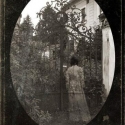
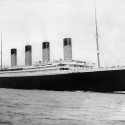
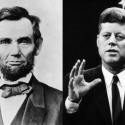
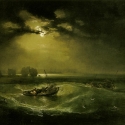
The most interesting topics created by users will be included in the Storyexpe Mystery map (for free, see below ⇓).
TITANIC
If I tell you that there is a novel about the wreck of a ocean liner called "Titan", which: sinks in the North Atlantic, not far away from the position where the Titanic sank, also in a night of April; has almost the same length (269 m vs. 244 m); is described as "unsinkable", and has a similar structure as the Titanic; has a similar number of passengers as the Titanic (2200 vs. 2500), has almost the same tonnage as the Titanic; is characterized by a shortage of lifeboats; collides with an iceberg from the starboard side, is owned by a British shipping company in Liverpool, exactly like the Titanic.
Well, many of you would think that the author of this novella, Morgan Robertson, was inspired by the real tragedy of the Titanic, in 1912. In fact, his book "Futility" was published 14 years before the wreck of the Titanic, and long before a ship with this name and characteristics was even conceptualized. Indeed, after the Titanic sank, his book, his book, which had not received too much attention until then, was considered somewhat prescient. ...Was it? No! ...And why not? Because: 1) Like in many similar circumstances, people tend to be impressed by the similarities and coincidences, not considering differences in the same way (for example: in the novella, almost all passengers died, not so for the real Titanic). 2) The author of this novella, Morgan Robertson, had a deep knowledge in shipbuilding and was very interested in maritime trends. For this reason it wasn't difficult for him to draw up a plausible and realistic story. 3) In fact, many of the events were rather common for the time, such as the collision with an iceberg. Moreover, already 18 years before the publication of the book, a steamboat called Titania sank in the North Atlantic within three hours after colliding with an iceberg.
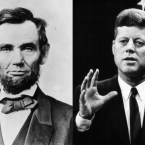
LINCOLN & KENNEDY
The vicissitudes of US Presidents John F. Kennedy and Abraham Lincoln are characterized by a series of coincidences, most of these, taken for themselves, of little account. But together they form a curious context. It is appropriate to specify that, being coincidences, it is possible to list all the possible coincidences, neglecting the numerous facts that do not coincide.
• Both presidents were elected to the House of Representatives in '46.
• Both presidents were elected to the presidency in '60.
• Lincoln was shot at Ford's Theatre; Kennedy was shot in a Lincoln automobile, made by Ford.
• Both presidents were shot in the head on a Friday seated beside their wives.
• Both their Vice Presidents and successors were named Johnson (Andrew Johnson / Lyndon B. Johnson), both born in '08.
• After shooting Lincoln, Booth ran from a theatre to a warehouse; after shooting Kennedy, Oswald ran from a warehouse to a theatre.
• Lincoln sat in box number 7 at Ford's Theater; Kennedy sat in car number 7 in the motorcade.
• The doctors who primarily attended to each president were both named Charles. Dr. Charles Leale treated Lincoln. Dr. Charles Crenshaw treated Kennedy.
The list of trivial similarities is very long, but in addition there are some refuted coincidences, which are often cited as true:
Lincoln's secretary was named Kennedy, and Kennedy's secretary was named Evelyn Lincoln - Kennedy indeed had a secretary named Evelyn Lincoln; the assertion that Lincoln had a secretary named Kennedy is an invention.
